Discover 11 hidden attractions, cool sights, and unusual things to do in Elgin (United Kingdom). Don't miss out on these must-see attractions: Elgin Cathedral, Spynie Palace, and St Giles' Church. Also, be sure to include Duffus Castle in your itinerary.
Below, you can find the list of the most amazing places you should visit in Elgin (Scotland).
Table of Contents
Elgin Cathedral
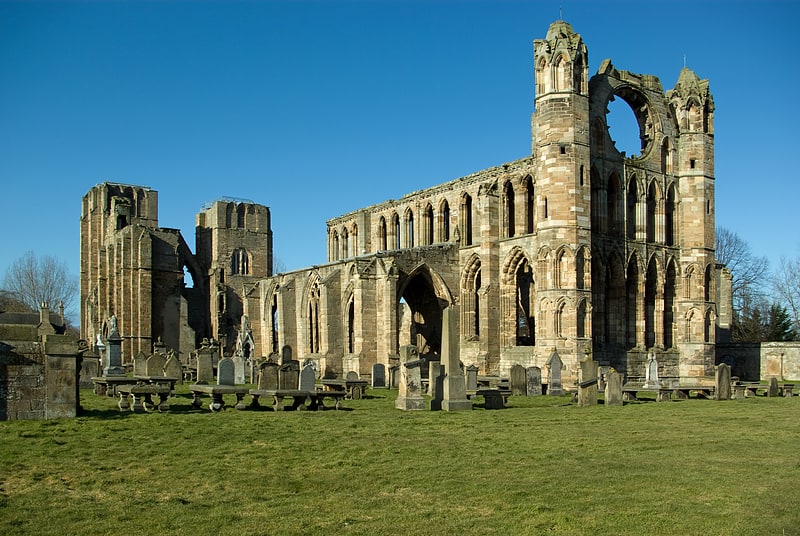
Ruins of a centuries-old Catholic church. Elgin Cathedral is a historic ruin in Elgin, Moray, north-east Scotland. The cathedral—dedicated to the Holy Trinity—was established in 1224 on land granted by King Alexander II outside the burgh of Elgin and close to the River Lossie. It replaced the cathedral at Spynie, 3 kilometres to the north, that was served by a small chapter of eight clerics. The new and bigger cathedral was staffed with 18 canons in 1226 and then increased to 23 by 1242. After a damaging fire in 1270, a rebuilding programme greatly enlarged the building. It was unaffected by the Wars of Scottish Independence but again suffered extensive fire damage in 1390 following an attack by Robert III's brother Alexander Stewart, Earl of Buchan, also known as the Wolf of Badenoch. In 1402 the cathedral precinct again suffered an incendiary attack by the followers of the Lord of the Isles. The number of clerics required to staff the cathedral continued to grow, as did the number of craftsmen needed to maintain the buildings and surroundings.
The cathedral went through periods of enlargement and renovation following the fires of 1270 and 1390 that included the doubling in length of the choir, the provision of outer aisles to the northern and southern walls of both the nave and choir. Today, these walls are at full height in some places and at foundation level in others yet the overall cruciform shape is still discernible. A mostly intact octagonal chapter house dates from the major enlargement after the fire of 1270. The gable wall above the double door entrance that links the west towers is nearly complete and was rebuilt following the fire of 1390. It accommodates a large window opening that now only contains stub tracery work and fragments of a large rose window. Recessed and chest tombs in both transepts and in the south aisle of the choir contain effigies of bishops and knights, and large flat slabs in the now grass-covered floor of the cathedral mark the positions of early graves. The homes of the dignitaries and canons, or manses, stood in the chanonry and were destroyed by fire on three occasions: in 1270, 1390 and 1402. The two towers of the west front are mostly complete and were part of the first phase of construction. Only the precentor's manse is substantially intact while two others have been incorporated into private buildings. A protective wall of massive proportions surrounded the cathedral precinct, but only a small section has survived. The wall had four access gates, one of which—the Pans Port—still exists.
The number of canons had increased to 25 by the time of the Scottish Reformation in 1560 when the cathedral was abandoned and its services transferred to Elgin's parish church of St Giles. After the removal of the lead waterproofing of the roof in 1567, the cathedral fell steadily into decay. The building was still largely intact in 1615 but in the winter of 1637, a storm brought down the roof covering the eastern limb. In the spring of 1711, the central steeple above the crossing collapsed taking the walls of the nave with it. Ownership was transferred from the Church to the Crown in 1689 but that made no difference to the building's continuing deterioration. Only in the early years of the 19th Century did the Crown begin the conservation process—the stabilisation of the structure proceeded through until the end of the 20th Century with the large-scale improvements to the two western towers.[1]
Address: King St, IV30 1HU Elgin
Spynie Palace
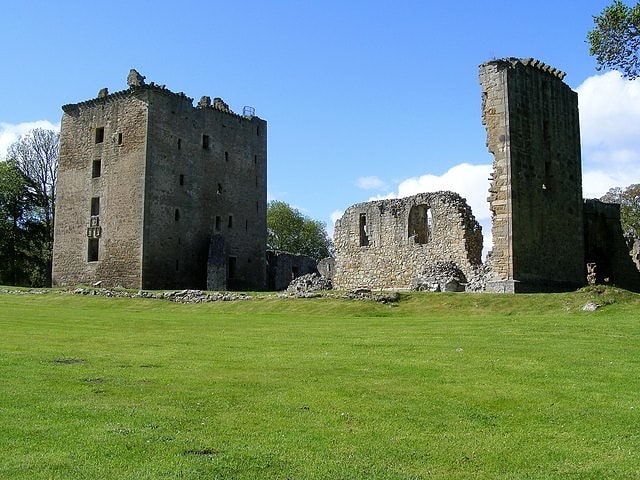
Remains of a 1300's bishop's residence. Spynie Palace, also known as Spynie Castle, was the fortified seat of the Bishops of Moray for about 500 years in Spynie, Moray, Scotland. The founding of the palace dates back to the late 12th century. It is situated about 500 m from the location of the first officially settled Cathedral Church of the Diocese of Moray, Holy Trinity Church in present-day Spynie Churchyard. For most of its occupied history, the castle was not described as a palace — this term first appeared in the Registry of Moray in a writ of 1524.[2]
St Giles' Church
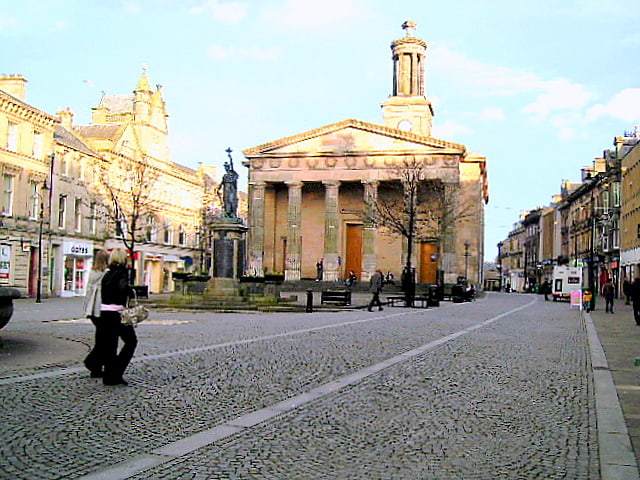
Church in Elgin, Scotland. St Giles' Church is a Church of Scotland church situated in the centre of Elgin, Moray, in north-east Scotland. It is Elgin's original parish church.
The current building was built between 1825 and 1828 and designed in a Greek Revival style by architect Archibald Simpson. It has been a Category A listed building since 1971.
The first record of a church on the site is a charter from William the Lion, dating from between 1187 and 1189, granting St Giles' to the Bishop of Moray, though the discovery of the 9th century Elgin Pillar in the area of the churchyard in 1823 suggests that the medieval church may have had a much earlier predecessor. St Giles' was restored after being burned by Alexander Stewart, the "Wolf of Badenoch", in 1390, and the nave was rebuilt after its vaulted stone roof collapsed in 1679. Burials in the churchyard ceased in the early 17th century, and cartloads of human bones were removed in 1826, either transferred to the graveyard of Elgin Cathedral or mixed with soil and spread on fields around the burgh, while gravestones were used to pave the High Street.[3]
Duffus Castle
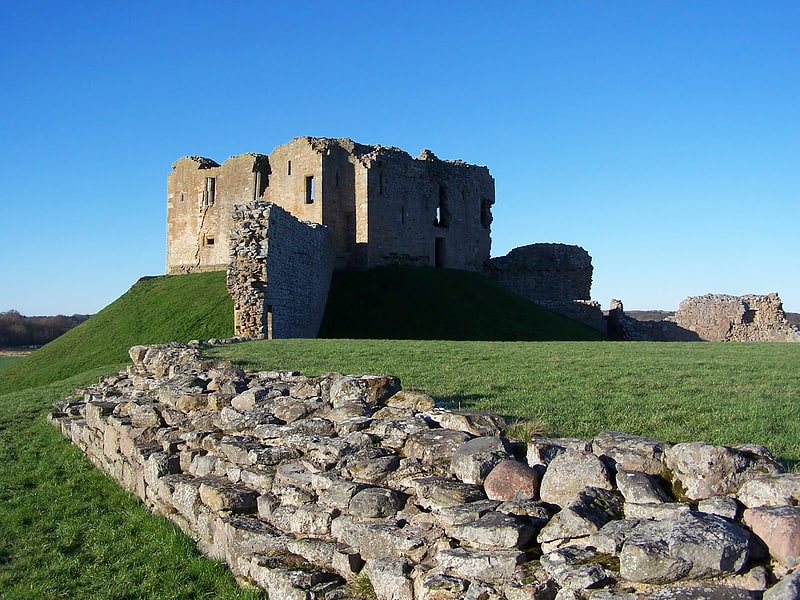
Medieval ruins with informational boards. Duffus Castle, near Elgin, Moray, Scotland, was a motte-and-bailey castle and was in use from c. 1140 to 1705. During its occupation it underwent many alterations. The most fundamental was the destruction of the original wooden structure and its replacement with one of stone. At the time of its establishment, it was one of the most secure fortifications in Scotland. At the death of the 2nd Lord Duffus in 1705, the castle had become totally unsuitable as a dwelling and so was abandoned.[4]
Pluscarden Abbey
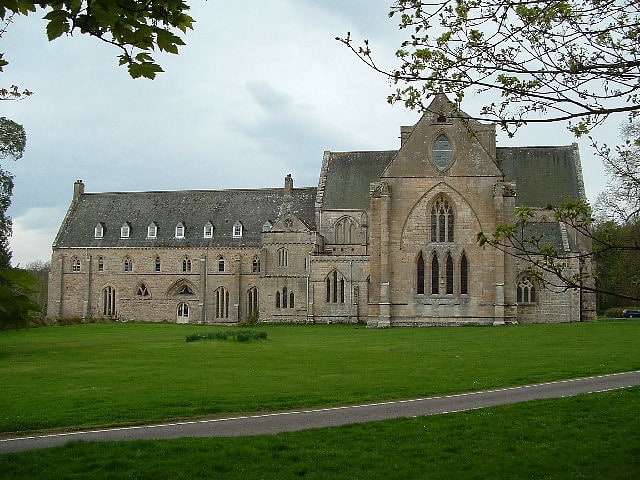
Monastery in Pluscarden, Scotland. Pluscarden Abbey is a Catholic Benedictine monastery in the glen of the Black Burn, six miles southwest of Elgin, Moray, Scotland. It was founded in 1230 by Alexander II for the Valliscaulian Order.
In 1454, following a merger with the priory of Urquhart, Pluscarden Priory became a Benedictine House. The Scottish Reformation saw the decline of the priory, and by 1680 it was in a ruinous condition. Some work to arrest decay took place in the late 19th century. In 1948, the priory became a house of the Subiaco Cassinese Congregation of Benedictines, and restoration began at the hands of monks from Prinknash Abbey in Gloucestershire. In 1966, the priory received its independence from the mother-house; it was elevated to abbatial status in 1974.[5]
Address: 6 Miles West of Elgin, IV30 8UA Elgin
Elgin Museum
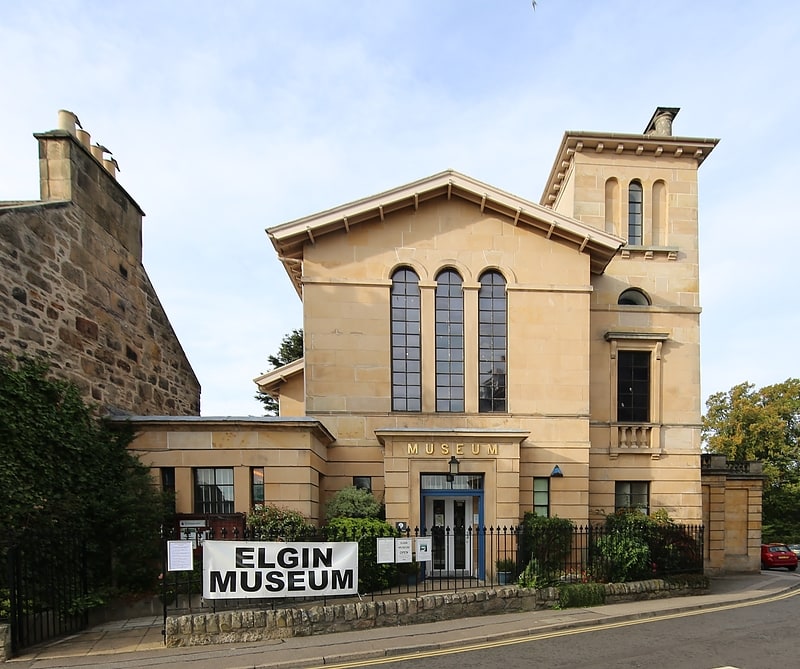
Museum in Elgin, Scotland. Elgin Museum is a museum of local history in Elgin, Moray, Scotland. Its collections cover area fossils and geology, archaeology, ethnography, art and local history. Opened in 1843, it is one of the oldest independent museums in the country. The museum is run by The Moray Society. Entry to the museum is free.
The museum is housed in a Category A listed building on Elgin's High Street and was designed by architect Thomas Mackenzie in 1842, with later alterations and additions made by A. Marshall Mackenzie and Son in 1920.
Its fossil collection is classed as a Recognised Collection by Museums Galleries Scotland. In August 2021, the bones of a 375 million year old predator discovered three miles away were put on display.[6]
Address: 1 High Street, IV30 1EQ Elgin
Little Cross
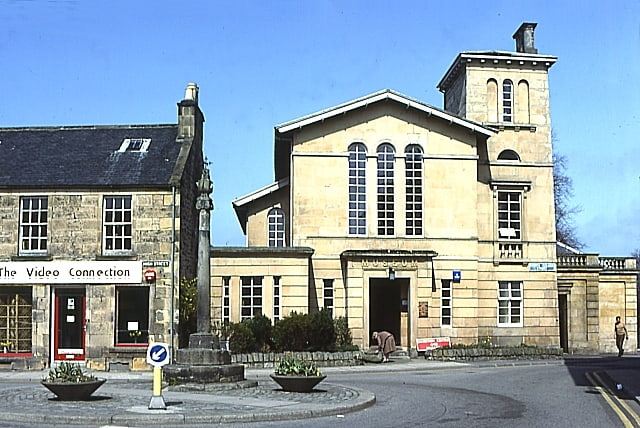
The Little Cross is a monument in Elgin, Scotland, located at end of the city's High Street. It marks the boundary between secular Elgin and the religious Chanonry, a part of the town that had historically been given over to ecclesiastical governance under the Bishops of Moray. The Elgin Museum, one of the oldest in the country, is directly adjacent to the structure. The name 'Little Cross' differentiates it from Elgin's 'Muckle Cross', the name of the town's market cross.[7]
Greyfriars Sisters of Mercy Convent in Elgin

Monastery. Greyfriars Sisters of Mercy Convent in Elgin, Moray is one of the few Catholic monasteries, founded in Scotland after the Reformation in 1560.[8]
Elgin Motor Museum

Specialty museum, Museum
Address: 6 Bridge Street, IV30 4DE Elgin
Ashgrove Motorbody

Bridge
Address: Ashgrove Road, Elgin
Braco's Banking House
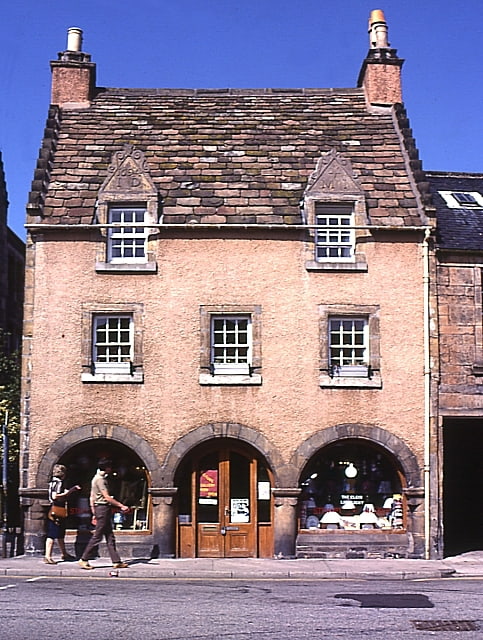
Braco's Banking House is a three-storey town house in Elgin, Moray in Scotland. The home and business place of banker William Duff of Braco from 1703 to 1722, the house has borne his name ever since. It was designated a Category A listed building in 1970.[9]